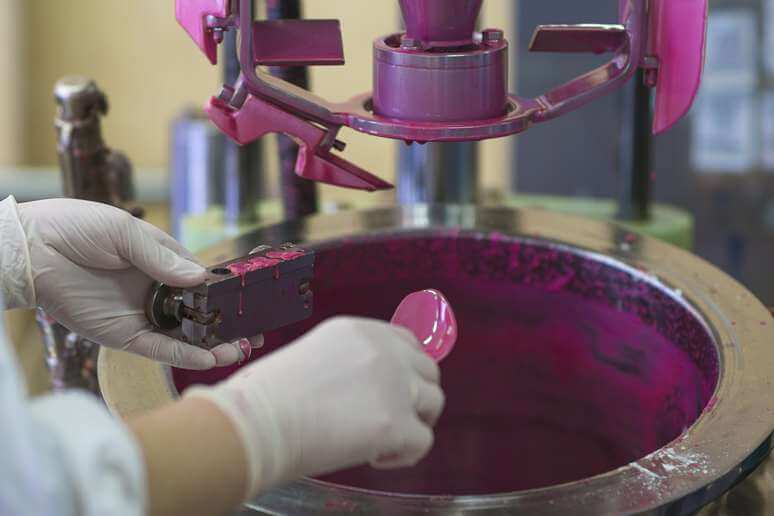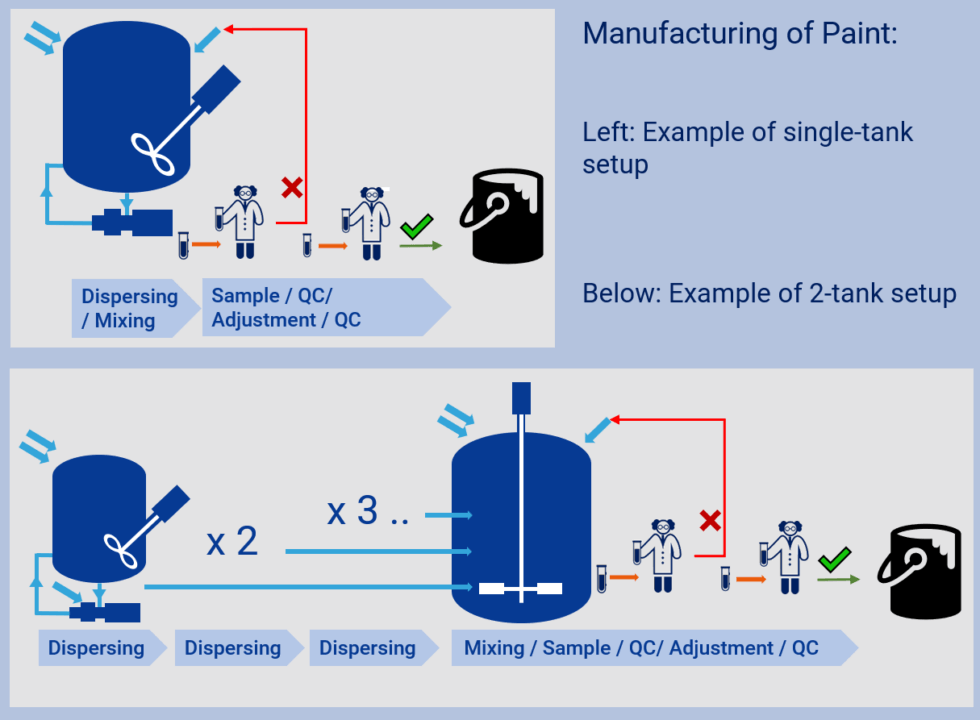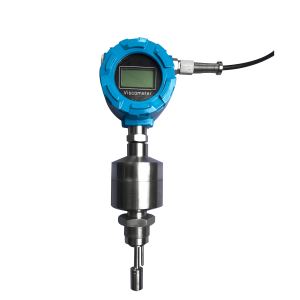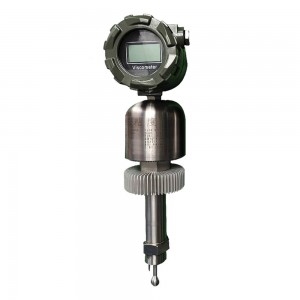Viscosity directly affects how paint flows, spreads, and covers surfaces. It determines application efficiency, film uniformity, and the final appearance, whether brushed, sprayed, or roll coated. For example, spraying requires lower paint viscosity for fine atomization; brushing or rolling demands higher viscosity for optimal leveling and coverage. An incorrect viscosity results in sagging, running, uneven color, and inconsistent thickness, all of which undermine product quality and performance.
For manufacturers, laboratory managers, and quality control engineers, maintaining consistent paint viscosity is a constant challenge. Variations in temperature, solvent selection, resin molecular weight, and additives can dramatically impact viscosity during production and application. Uncontrolled changes lead to operational inefficiencies, uneven films, increased waste, and potential product recalls—raising costs and damaging reputation. Quality control teams must address issues like pH deviation, incompatible additives, and mechanical stresses that destabilize formulations. Maintaining stability involves robust control systems.

Understanding Paint Viscosity and Its Role
What is Viscosity in Paint Systems?
Viscosity is the measure of a fluid’s resistance to flow under applied stress. In paint systems, it describes how easily paint moves, spreads, or is deformed by tools or gravity. Rheology encompasses not only viscosity but also other behaviors like thixotropy and shear thinning, describing how paints respond to different forces and rates of deformation.
Viscosity plays a core role in paint formulation. It determines how pigments are dispersed, ensures the paint remains stable in storage, and affects blending during manufacturing. Paints are designed with specific viscosity ranges to meet the demands of their intended application method, whether spraying, brushing, or rolling. This helps guarantee that paint covers surfaces evenly, forms defect-free films, and meets appearance standards.
In the final product, appropriate viscosity ensures coverage, consistent film thickness, and surface finish quality. It is integral to controlling issues such as sagging, dripping, or inadequate build, directly impacting user satisfaction and long-term durability.
Why Measure Paint Viscosity?
Product Consistency and Quality Control
Paint viscosity measurement is central to maintaining uniform product quality. If viscosity varies from batch to batch, the paint may separate, produce color inconsistencies, or apply unevenly during use. Newly developed inline paint viscosity measurement equipment, such as rotary viscometers and acoustic wave sensors, allow manufacturers to monitor viscosity in real-time, quickly correcting deviations and improving process control.
Application Properties
The viscosity of paint governs how smoothly it can be sprayed, brushed, or rolled. For example:
- Low viscosity paints (thin) are preferred for spray application, enabling fine atomization and smooth coverage.
- High viscosity paints (thick) work better for vertical surfaces, reducing dripping and sagging risk.
Drying Time and Film Formation
Viscosity influences drying kinetics. High-viscosity paints generally retain solvents longer, slowing the evaporation rate, which can extend drying time and increase defect risks related to environmental dust adhesion or sagging. Low-viscosity paints dry faster but may suffer from inadequate coverage or thin, brittle films. The correct measurement and adjustment of viscosity help optimize both drying time and end-product durability.
Durability and Performance
Durability of paint films is linked to controlled viscosity during both formulation and application. Proper viscosity helps prevent common issues such as:
- Sagging and running on vertical or overhead surfaces.
- Insufficient film build, leading to poor mechanical resistance.
- Irregular surface appearance, reducing long-term appeal and protection.
Uncontrolled viscosity can cause:
- Increased risk of defects like orange peel, pinholes, or uneven gloss.
- Poor brush loading and reduced tinting stability.
- Failure to meet performance requirements, resulting in higher warranty claims and dissatisfied users.
Industrial and Consumer Consequences
In industrial processes—like automotive finishing and coil coating—paint viscosity is monitored via inline paint viscosity meters. These paint viscosity testing instruments enable continuous online paint viscosity monitoring, preventing costly downtime and rework. In consumer paints, erratic viscosity leads to application difficulties (like spattering or sagging) and reduced product lifespan.
Measuring paint viscosity accurately, with either laboratory paint viscosity measurement tools or real-time paint viscosity meters, underpins quality assurance. Combining standardized paint viscosity test methods (such as flow cups and rotational viscometers) with advanced inline paint viscosity measurement techniques, manufacturers and users alike ensure paints perform as intended across varied application and environmental conditions.
Examples of Practical Impact:
- Automotive factories utilize inline paint viscosity measurement for consistent coating thickness on high-speed lines.
- Architectural paints are tested using flow cups and rotational viscometers to match recommended viscosity ranges for brushing and rolling.
- Continuous monitoring systems adapt formulation additives to compensate for tint-induced viscosity drops, safeguarding application quality and film durability.
Techniques and Tools for Measuring Paint Viscosity
Inline Viscometers: Modern and Advanced Techniques
Inline paint viscosity measurement leverages sensors directly embedded into production lines. Devices such as capillary nozzle viscometers, ultrasonic sensors, and machine-vision-based meters continually measure viscosity during paint manufacture.
Key advantages:
- Real-time feedback enables automated process control, reducing manual intervention.
- Viscosity adjustments can occur instantly, yielding improved product consistency.
- Significant reductions in material waste as viscosity deviations are caught early.
Inline systems are contrasted with offline (batch) methods. Offline systems, requiring manual sampling, are slower and may miss transient process variations. Inline approaches support Industry 4.0 strategies, with data streams feeding directly into manufacturing intelligence platforms.
Inline viscometers suit high-throughput environments and are increasingly adopted in automotive, packaging, and industrial coatings plants.
Implementing Inline Paint Viscosity Measurement
How to Measure Paint Viscosity Inline: Step-by-Step
1. System Integration & Sensor Selection
Choosing the right equipment for measuring viscosity of paint is crucial to reliable inline viscosity measurement. Begin by evaluating process needs: consider paint type (such as water-based, solvent-based, or non-Newtonian), flow conditions, temperature ranges, and system connectivity. Inline paint viscosity measurement involves permanently installing a sensor or probe within piping, tanks, or circulating loops, providing continuous data.
Common paint viscosity measurement equipment includes:
- Rotary Viscometers: Reliable for continuous processes in gravure printing and coatings.
- Vibrational Viscometer: Effective for rapid response and minimal intrusion.
- Flexible Piezoresistive Sensors: Offer sensitive measurement capabilities and adaptability in environments with variable geometry.
- Machine-Learning Video Viscometers: Analyze fluid motion or droplet shape in process lines using embedded cameras and algorithms.
Integration requires attention to sensor material compatibility (such as corrosion resistance for aggressive solvents), and the flow profile. Opt for models with built-in temperature compensation and data interface (analog, digital, or wireless). For best results, match the sensor type to paint rheology—some sensors perform better with Newtonian paints, while others are optimized for complex, shear-thinning formulations.
2. Data Acquisition, Analysis, and Feedback to Process Controls
Modern paint viscosity measurement methods rely on robust data acquisition. Digital and analog signals from sensors are fed into a control system or PLC. Real-time software calculates viscosity values, trends, and alarms for deviations. Wireless data acquisition and smart telemetry are increasingly common, reducing data congestion while retaining measurement resolution.
Inline paint viscosity measurement data feeds directly into process controls, enabling automatic adjustments to solvent addition, mixing speed, or temperature to maintain target paint viscosity standards. FPGA-based systems and integrated process analyzers offer rapid, high-precision viscosity and density measurement, ensuring production stability and quality control.
Analysis algorithms now incorporate real-time correction for variables like flow turbulence, pressure, and temperature, tightly linking measurement data with operational feedback for minimal lag and optimal control. Data is logged for batch documentation, compliance audits, and process optimization.
Addressing Practical Challenges
Dealing with Temperature, Particulate Matter, and Paint Aging
Paint viscosity is highly sensitive to temperature changes. As temperature rises, viscosity typically falls—potentially skewing results if uncorrected. Inline sensors now routinely include temperature probes and compensation algorithms. For pressure-sensitive paints (PC-PSP) or formulations with strong temperature-dependent viscosity, adopt sensors with advanced correction schemes and verify accuracy by benchmarking across the entire process temperature range.
Particulate matter and undissolved solids can clog or foul sensors and affect measurement reliability. Choosing non-intrusive sensor designs, or those with smooth, self-cleaning surfaces, can reduce downtime. For heavily filled or thixotropic paints, rotary viscometers or piezoresistive pressure sensors are preferable due to their ability to handle complex dispersions.
Paint aging, including changes in viscosity due to polymerization, solvent loss, or pigment sedimentation, can cause sensor drift. Implement routine in-situ calibration or validation with check standards to ensure consistent performance throughout the paint’s shelf life.
Solutions for Maintaining Sensor Accuracy and Reliability
- Temperature/Pressure Compensation: Select sensors offering integrated compensation, such as the [https://www.lonnmeter.com/inline-paint-viscometer-product/], which continually adjusts for environmental changes .
- Multimodal Sensors: Utilize designs that measure both strain/flow and temperature simultaneously, particularly in environments with variable ambient conditions.
- Smart Data Filters: Employ software-based filters or machine learning techniques to flag outliers, detect sensor drift, and reject spikes caused by process upsets.

Optimizing Paint Production with Inline Viscosity Measurement
Benefits for Manufacturers and QC Engineers
Inline paint viscosity measurement delivers immediate, continuous feedback, outclassing traditional methods such as flow cups, rotary, or capillary viscometers, which require sampling and interrupt production. With tools like the Lonnmeter inline viscometer, viscosity, density, and flow are monitored in real time using robust sensor technologies, allowing operators to adjust temperature, solvent, and flow automatically for targeted properties.
Enhanced Process Stability
Inline instruments enable consistent process conditions by detecting and correcting viscosity drift as soon as it occurs. When viscosity is maintained at the optimum range, pigment dispersion and film formation improve, reducing the risk of paint defects like streaking or sagging.
- Example: In automotive basecoat lines, inline systems monitor every batch, instantly triggering dosing adjustments—process fluctuations are eliminated before compromise occurs.
Reduced Batch-to-Batch Variability
Batch uniformity relies on precise viscosity control. Inline sensors capture every viscosity change throughout mixing, blending, and transfer. Automated adjustments based on real-time data ensure every batch meets targets for color, flow, and rheology.
- In architectural paint production, switching to inline viscosity measurement reduced color mismatches and viscosity deviation, consistently passing QC inspections.
Lowered Waste and Rework Rates
Manual viscosity testing is often too slow to catch problems before significant waste accumulates. Inline tools allow early detection and correction, minimizing off-spec product.
- Example: In ink deposition for packaging, real-time viscosity meters reduced ink consumption by 5% and nearly eliminated costly rework.
Automated Alarms and Corrective Actions
Modern viscosity monitoring systems use programmable alarms. When sensors detect material out-of-range, alarms trigger automated corrective actions: pump adjustment, solvent dosing, or process shutdown, as needed.
- Automated kinematic capillary viscometers employing computer vision spot deviations instantly, alerting teams and making fast corrections.
New Sensing Approaches for Smart Manufacturing
Emerging inline paint viscosity measurement techniques leverage acoustic wave sensors, solid-state probes, and advanced computer vision for hands-free, high-precision monitoring. These tools provide multidimensional data—combining paint thickness, density, and flow—improving accuracy and flexibility beyond traditional rotary or cup methods.
- Machine vision algorithms, using sample vial images, assess viscosity for non-Newtonian paints where conventional sensors struggle.
Microfluidic and Cloud-Based Viscosity Monitoring
Microfluidic devices miniaturize the viscosity measurement process, allowing for quicker, high-throughput testing with very small sample volumes. Cloud-based systems collect data from multiple lines and facilities, enabling cross-site QC comparisons, process benchmarking, and global standardization.
- Remote operators monitor viscosity metrics on mobile devices, receiving instant alerts when readings stray from setpoints, and directly initiate interventions.
Paint manufacturers now deploy best equipment for measuring paint viscosity—inline paint viscosity meters and smart sensors—paired with paint rheology measurement and automated process control. This transforms both production reliability and output quality while positioning factories for future innovation in paint viscosity determination methods.
FAQs: Inline Paint Viscosity Measurement
How does inline measurement differ from offline lab analyses?
Inline paint viscosity measurement captures viscosity data directly in the production line, providing real-time, continuous monitoring without the need to pause or divert the process. This contrasts with offline lab viscosity test methods, where samples are manually extracted, transported, and analyzed away from production, often leading to time delays and increased risk of human error.
Inline techniques use various paint viscosity measurement tools, such as vibrational, capillary, and rotational inline viscometers. These instruments integrate into the process flow, allowing automatic adjustment and immediate response to any viscosity deviations. For example, if viscosity drifts from target ranges, a connected process control system can automatically correct solvent or pigment concentrations to maintain product uniformity.
Offline analyses, application of paint viscosity test methods like flow cups or rotational viscometers per paint viscosity standards, require manual intervention. Corrections are possible only after the analysis is complete, which can result in extended production times, possible off-spec batches, and higher solvent or material waste. Inline measurement leads to efficiency gains, reduced quality deviations, and enhanced automation compared to slow, episodic offline lab tests.
Can inline viscometers handle all types of paint?
Modern inline viscometers are engineered to manage a wide spectrum of paint rheologies and compositions, including Newtonian and non-Newtonian paints. Technologies such as vibrational viscometers excel in handling complex and rapidly changing shear rates, which are typical in spray and high-speed coating applications. Resonant and microfluidic viscometers also adapt to diverse paint viscosities and flow behaviors, including thixotropic and pseudoplastic paints.
Inline systems are now routinely used for paints with challenging properties—ranging from high-solids automotive coatings to waterborne decorative paints. Many models offer broad operating ranges and require minimal recalibration across batch variations. There are, however, some edge cases, such as heavily pigmented, multi-phase, or highly elastic coatings, where application-specific calibration or custom sensor design increases measurement accuracy.
Continuous advances in paint viscosity measurement equipment and rheology measurement techniques have expanded the compatibility of inline meters, making them suitable for nearly all process paints as well as adhesives, sealants, and specialty coatings.
What are common mistakes in measuring paint viscosity and how to avoid them?
Several errors recur in both setup and operation of inline paint viscosity measurement tools:
- Incorrect sensor placement: Installing probes in areas with poor flow, stagnant zones, or air bubbles leads to inaccurate readings. Computational modeling, such as CFD, helps identify optimal immersion depth, angle, and velocity, ensuring the sensor is exposed to representative sample flow.
- Neglecting temperature compensation: Paint viscosity is highly temperature-dependent. Failure to integrate temperature correction produces misleading trends. Modern inline systems automatically compensate for temperature fluctuations.
- Ignoring calibration drift: Over time, deposition, fouling, or mechanical wear affect sensor output. Scheduled calibration using paint viscosity standards or reference fluids is critical.
- Poor cleaning and maintenance: Accumulation of paint residues alters probe sensitivity and causes erroneous results, especially in highly pigmented systems. Following regimented cleaning and post-batch maintenance protocols addresses this.
- Improper instrument choice: Selecting a viscometer that is unsuited for the paint’s rheology—e.g., using a basic rotational device for a thixotropic paint—can introduce persistent error.
- Delayed response to deviations: Failing to leverage real-time alerts and automate responses allows off-spec product to go undetected. Inline viscosity measurement equipment that connects to process controls can minimize manual oversight.
To avoid these pitfalls:
- Always validate installation with manufacturer guidance or CFD analysis.
- Use temperature-compensated systems and verify calibration routinely.
- Clean probes systematically.
- Match equipment selection to specific paint viscosity measurement techniques relevant for the material.
- Integrate real-time alarms and automated process correction mechanisms.
Maintenance and calibration tips for inline viscosity probes
Proper maintenance and calibration ensure accuracy in paint viscosity determination methods, extend probe lifespan, and support process efficiency:
- Routine Cleaning: Remove paint build-up after every production batch, especially from highly filled or fast-curing paints. Use manufacturer-recommended solvents and tools to prevent sensor damage.
- Scheduled Calibration: Calibrate probes at intervals specified by quality standards, or after any corrective maintenance. Employ reference fluids or standardized paints that closely mimic process conditions.
- Sensor Validation: Cross-verify inline measurements with offline laboratory paint viscosity testing instruments using industry standards.
- Documentation: Keep records of maintenance, calibration, and validation activities to ensure traceability and compliance.
- Optimal Installation and Placement: Use guidelines—and, where available, insights from CFD studies—to select sensor depth, alignment, and flow velocity.
- Visual Inspection and Diagnostics: Periodically inspect sensors for damage or residues, and utilize onboard diagnostic functions for early malfunction detection.
Maintenance routines not only keep paint viscosity meters operating at peak accuracy but also contribute to paint flow measurement for quality control and reduction of process waste. Regular attention to these details minimizes downtime and aligns with evolving sustainability and environmental standards in modern paint manufacturing.
Post time: Oct-29-2025











